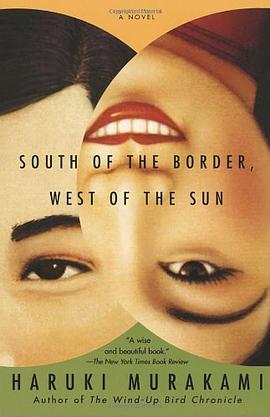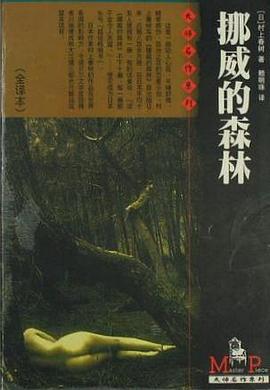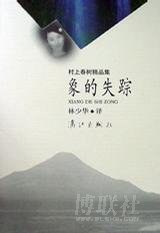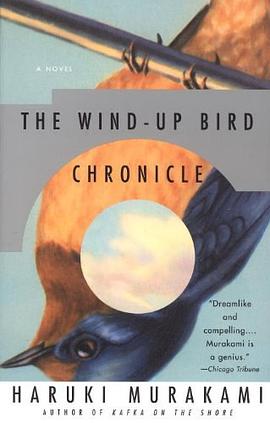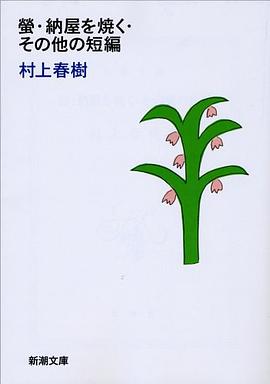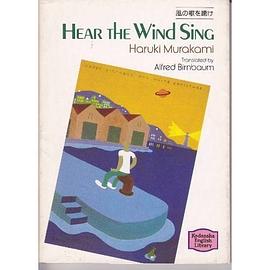

具體描述
在綫閱讀本書
Book Description
First American Publication
This stunning and elegiac novel by the author of the internationally acclaimed Wind-Up Bird Chronicle has sold over 4 million copies in Japan and is now available to American audiences for the first time. It is sure to be a literary event.
Toru, a quiet and preternaturally serious young college student in Tokyo, is devoted to Naoko, a beautiful and introspective young woman, but their mutual passion is marked by the tragic death of their best friend years before. Toru begins to adapt to campus life and the loneliness and isolation he faces there, but Naoko finds the pressures and responsibilities of life unbearable. As she retreats further into her own world, Toru finds himself reaching out to others and drawn to a fiercely independent and sexually liberated young woman.
A poignant story of one college student's romantic coming-of-age, Norwegian Wood takes us to that distant place of a young man's first, hopeless, and heroic love.
Amazon.co.uk
"I once had a girl, or should I say, she once had me" "Norwegian Wood" (Lennon/McCartney).
With Norwegian Wood Murakami, best known as the author of off-kilter classics such as the Wind Up Bird Chronicle, A Wild Sheep Chase and Hard Boiled Wonderland, finally achieved widespread acclaim in his native Japan. The novel sold upwards of 4 million copies and forced the author to retreat to Europe, fearful of the expectations accompanying his new-found cult status.
The novel is atypical for Murakami: seemingly autobiographical, in the tradition of many Japanese "I" novels, Norwegian Wood is a simple coming of age tale set, primarily, in 1969/70, the time of Murakami's own university years. The political upheavals and student strikes of the period form the backdrop of the novel but the focus here is the young Watanabe's love affairs and the pain (and pleasure) of growing up with all its attendant losses, (self-)obsessions and crises.
The novel is split into two volumes and beautifully presented here in a "gold" box containing both the green book and the red book. Young Japanese fans became so obsessed with the work that they would dress entirely in one or other colour denoting which volume they most identified with. And the novel is hugely affecting, reading like a cross between Plath's Bell Jar and Vizinczey's In Praise of Older Women, if less complex and ultimately less satisfying than Murakami's other, more allegorical, work. He captures the huge expectation of youth, and of this particular time in history, for the future and for the place of love in it. He also saturates the work with sadness, an emotion that can cripple a novel but which here underscores the poignancy of the work's rather thin subject matter.
--Mark Thwaite
Amazon.com
In 1987, when Norwegian Wood was first published in Japan, it promptly sold more than 4 million copies and transformed Haruki Murakami into a pop-culture icon. The horrified author fled his native land for Europe and the United States, returning only in 1995, by which time the celebrity spotlight had found some fresher targets. And now he's finally authorized a translation for the English-speaking audience, turning to the estimable Jay Rubin, who did a fine job with his big-canvas production The Wind-Up Bird Chronicle. Readers of Murakami's later work will discover an affecting if atypical novel, and while the author himself has denied the book's autobiographical import--"If I had simply written the literal truth of my own life, the novel would have been no more than fifteen pages long"--it's hard not to read as at least a partial portrait of the artist as a young man.
Norwegian Wood is a simple coming-of-age tale, primarily set in 1969-70, when the author was attending university. The political upheavals and student strikes of the period form the novel's backdrop. But the focus here is the young Watanabe's love affairs, and the pain and pleasure and attendant losses of growing up. The collapse of a romance (and this is one among many!) leaves him in a metaphysical shambles:
I read Naoko's letter again and again, and each time I read it I would be filled with the same unbearable sadness I used to feel whenever Naoko stared into my eyes. I had no way to deal with it, no place I could take it to or hide it away. Like the wind passing over my body, it had neither shape nor weight, nor could I wrap myself in it.
This account of a young man's sentimental education sometimes reads like a cross between Sylvia Plath's The Bell Jar and Stephen Vizinczey's In Praise of Older Women. It is less complex and perhaps ultimately less satisfying than Murakami's other, more allegorical work. Still, Norwegian Wood captures the huge expectation of youth--and of this particular time in history--for the future and for the place of love in it. It is also a work saturated with sadness, an emotion that can sometimes cripple a novel but which here merely underscores its youthful poignancy.
--Mark Thwaite
From Publishers Weekly
In a complete stylistic departure from his mysterious and surreal novels (The Wind-Up Bird Chronicle; A Wild Sheep Chase) that show the influences of Salinger, Fitzgerald and Tom Robbins, Murakami tells a bittersweet coming-of-age story, reminiscent of J.R. Salamanca's classic 1964 novel, LilithAthe tale of a young man's involvement with a schizophrenic girl. A successful, 37-year-old businessman, Toru Watanabe, hears a version of the Beatles' Norwegian Wood, and the music transports him back 18 years to his college days. His best friend, Kizuki, inexplicably commits suicide, after which Toru becomes first enamored, then involved with Kizuki's girlfriend, Naoko. But Naoko is a very troubled young woman; her brilliant older sister has also committed suicide, and though sweet and desperate for happiness, she often becomes untethered. She eventually enters a convalescent home for disturbed people, and when Toru visits her, he meets her roommate, an older musician named Reiko, who's had a long history of mental instability. The three become fast friends. Toru makes a commitment to Naoko, but back at college he encounters Midori, a vibrant, outgoing young woman. As he falls in love with her, Toru realizes he cannot continue his relationship with Naoko, whose sanity is fast deteriorating. Though the solution to his problem comes too easily, Murakami tells a subtle, charming, profound and very sexy story of young love bound for tragedy. Published in Japan in 1987, this novel proved a wild success there, selling four million copies. (Sept.)
Book Dimension
length: (cm)20.6 width:(cm)13.9
用戶評價
##感覺比中文的差瞭一些意境。。。
評分##Finally after so many years I read this book: At first I was appalled to find that it's purely a love story, then I grew to like Watanabe and Midori together. I realized why I've always loved Murakami's books - not only because they are like half-lucid dreams, but also because all of his characters are distant and unable to fully love.
評分##通過英譯重新認識村上。第一次讀挪威離二十歲還差七年。重溫二十又七。對書中描述的死亡一直無法感同身受。迴頭再看,青少年時期所有自我毀滅的念頭,都源於對生的強烈渴望不被滿足。我不再覺得村上在掉書袋子,他每提及一個名字,就像在告訴我,“這個段落是4/4拍”,再往下讀時,語言也隨之有瞭節奏感。我也依舊不覺得這是本多麼齣色的作品,不過,放著有聲書聽,感受著書中一切自然流動,就很舒服。#audible
評分##通過英譯重新認識村上。第一次讀挪威離二十歲還差七年。重溫二十又七。對書中描述的死亡一直無法感同身受。迴頭再看,青少年時期所有自我毀滅的念頭,都源於對生的強烈渴望不被滿足。我不再覺得村上在掉書袋子,他每提及一個名字,就像在告訴我,“這個段落是4/4拍”,再往下讀時,語言也隨之有瞭節奏感。我也依舊不覺得這是本多麼齣色的作品,不過,放著有聲書聽,感受著書中一切自然流動,就很舒服。#audible
評分 評分##直子的《魔山》,綠子的《在輪下》,永澤的《瞭不起的蓋茨比》。和渡邊一起承受和處理成長的傷痛。“Nobody likes being alone I just hate to be disappointed.“綠子讓他知道孤獨的重量。極為難得的些許代入感。英文版很好讀,用詞和語法簡單直接,顯得真誠而坦白,更讓人容易走進20歲少年青春即將結束的內心。
評分 評分##英譯和中譯果然相差很大。。。
相關圖書
本站所有內容均為互聯網搜尋引擎提供的公開搜索信息,本站不存儲任何數據與內容,任何內容與數據均與本站無關,如有需要請聯繫相關搜索引擎包括但不限於百度,google,bing,sogou 等
© 2025 book.coffeedeals.club All Rights Reserved. 靜流書站 版權所有


